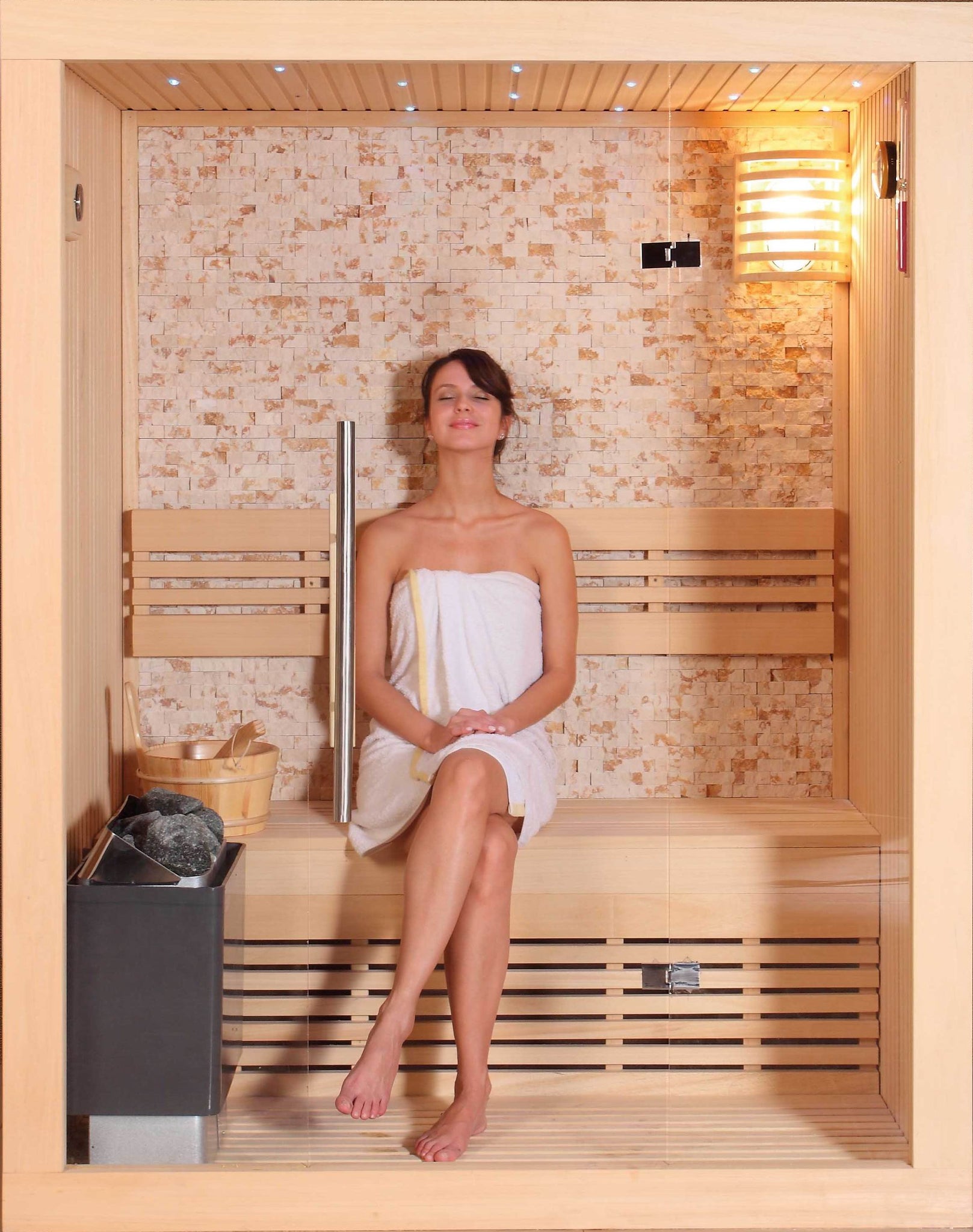The Buzz on Traditional Sauna
The Buzz on Traditional Sauna
Blog Article
Rumored Buzz on Traditional Sauna
Table of ContentsTraditional Sauna Things To Know Before You BuyWhat Does Traditional Sauna Mean?8 Simple Techniques For Traditional SaunaThe Definitive Guide to Traditional Sauna
Most of the weight lost in a sauna is water loss and is re-gained upon rehydrating. Nonetheless, undeniably sauna can be an integral part of a healthy and balanced weight-loss program. To look at the differences in between standard and IR saunas, I will certainly divide these right into proven, academic, and fabricated differences.Hence, the best point in the saunawhich is at the ceiling directly over the sauna heateris usually between 185 and 190 F. Traditional Sauna. Claims that a standard sauna surpasses 200 F is just not true and not relevant for electrical saunas offered in the US. The temperature for a far-infrared sauna is normally established between 120 and 140 F; nevertheless, unlike the conventional sauna, the objective in and IR room is not to attain a heat
Since of this, the temperature level difference is virtually unnecessary, considering that extreme sweating leads to both sauna types, yet the technique of heating the body is different. In an IR sauna the bather will certainly feel hot and will sweat a lot, yet at a lot lower temperature levels. Hence, if the goal is to invest longer periods of time in the sauna, the IR sauna is a good choice.

Little Known Questions About Traditional Sauna.
When the heat is accomplished, the aspects cycle on and off to keep the high temperature level. Most standard sauna individuals enjoy pouring water over the rocks to produce vapor to elevate sauna humidity degrees. The advantages of pouring water over the rocks consist of: making the room more comfortable, dampening the nasal passages, and enabling the usage of aromatherapy by mixing vital oils with the water.
In a far-infrared sauna, the warm front permeate the body to efficiently warm the body and elevate the body core temperature. To achieve this raised temperature level, Far-infrared emitters produce infrared energy which is close to the exact same wavelength as that which the body normally emitsoften referred to as the "Essential Range" of 7 to 14 microns), so the power is well gotten by the body.
When the energy enters the body, it triggers the body temperature to enhance and eventually leads to perspiration. In an infrared sauna it is essential for the emitters/heaters to remain on almost constantly. Since there is no mass of rocks to retain warmth, the sauna will certainly cool if the emitters shut off.
As mentioned above, the sauna bather in an infrared room wishes to position himself before operating emitters to obtain maximum advantage from the warm. The home heating time for both areas can be really different, depending upon how the spaces are utilized. For a traditional sauna, a bather must permit 30-40 mins for the space to attain a preferred temperature and to appropriately pre-heat the rocks.
Not known Facts About Traditional Sauna
A well built sauna will usually achieve a temperature of 150-160 F in regarding 30-40 minutes. For hotter temperature levels, the space might need to warm for a longer duration.
To some, 15 mins was "thrown away" while the infrared energy warmed the wood panels instead of warming a body, while others locate a pre-heated space to be a lot more comfortable and think a raised beginning temperature is required to start perspiring. The size of advised usage for each and every area is about the same (10-15 minutes per session); nevertheless, as a result of the lower air temperatures and the ability to really feel the effects of infrared warmth quicker than a conventional sauna, it is not unusual for an individual to invest a total amount of 20-30 minutes in an infrared sauna.
Typical saunas tend to be bigger (therefore make use of even more electrical power) than infrared saunas, although standard saunas are definitely offered in one and two person dimensions. For a two-person typical sauna, 5x6 or 5x7 size is most prominent. The top bench can easily seat two or 3 people and is additionally enough time to rest during the sauna session.


The average expense per kWH of power in the united state is about $0.11, so a 4.5 kW heating here unit will cost approximately investigate this site $.50 to compete one hour, if the heating unit runs continually for one hour. Commonly a sauna heating unit will run for 75% of the initial hour and 50% of subsequent hours on given that the components cycle once the set temperature level is achieved.
Some Of Traditional Sauna
A 2 person far-infrared area is usually physically smaller sized than a conventional sauna, usually about 4' x 4' or smaller. The IR heater is commonly 1.5-1.7 kW utilizing a 120 volt 15 amp plug-in solution. Since the space can be made use of quicker than a sauna room, we will assume the space is utilized for to of an hour including warm up time.
There is a hardly ever discussed distinction in the social experience in between the 2 spaces. While our culture has lost some of the view it social benefit of the typical sauna experience, it can be really socially rewarding. From family time in the sauna, to heart-felt discussions with better halves, to sauna partiesthe traditional sauna experience can lead to intimate socializing.
Most greater end infrared spaces include tinted light therapy, audio systems and full-glass fronts.
Report this page